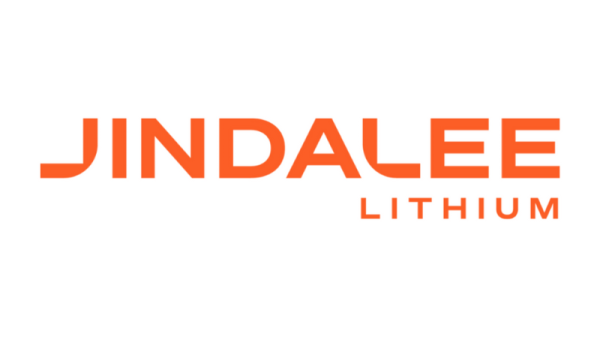The global IoT market is forecasted to grow, with the number of connected IoT devices projected to increase by 13% in 2024, reaching 18.8 billion by year-end, according to IoT Analytics’ latest “State of IoT Summer 2024” report.
This detailed analysis provides a market assessment and comprehensive summary of current trends and future forecasts for the global IoT landscape.
40 billion IoT devices projected by 2030: Despite ongoing challenges, including economic uncertainties, extended lead times in chipset supply, and a gradual economic recovery in China, IoT Analytics projects the market will continue its upward trajectory. The report forecasts that the number of connected IoT devices will grow to 40 billion by 2030, reflecting a measured but steady expansion.
Key Insights
The number of connected IoT devices is expected to grow 13% to 18.8 billion by the end of 2024 Over 40 billion connected IoT devices by 2030 3 technologies make up nearly 80% of the market: Wi-Fi, Bluetooth, and cellular IoT Chipset supply to remain a constraint for years to come in the face of surging demand The integration of AI in IoT, including generative AI and edge AI, is a key trend in 2024Select Quotes
Satyajit Sinha, Principal Analyst at IoT Analytics, comments that “Edge AI is fundamentally transforming the IoT landscape by allowing edge IoT devices to process data locally, reducing latency and enabling real-time responses. The integration of AI technologies, including generative AI and edge AI, is a significant trend in 2024, highlighted by increased discussions among corporate leaders. With companies like NVIDIA and AMD heavily investing in edge AI, the convergence of these technologies with IoT will drive the development of more intelligent and autonomous devices, leading to broader adoption of IoT solutions across various sectors.”
Connected IoT device market update—Summer 2024
Number of connected IoT devices to grow 13% by end of 2024. According to IoT Analytics’ 171-page State of IoT Summer 2024 report, there were 16.6 billion connected IoT devices by the end of 2023 (a growth of 15% over 2022). IoT Analytics expects this to grow 13% to 18.8 billion by the end of 2024. This forecast is lower than in 2023 due to continued cautious enterprise spending as inflation and interest rates remain high—though are moderating—alongside continued chipset supply constraints and ongoing geopolitical conflicts in Eastern Europe and the Middle East. Despite the above macro factors, 51% of enterprise IoT adopters plan to increase their IoT budget in 2024 (with 22% of companies expecting a 10%+ budget increase compared to 2023).
Key executive quote on the IoT market outlook
“We expect [Qualcomm’s] IoT revenues to grow sequentially by low to mid-single digit percentage as we continue to see a gradual recovery from the macro factors impacting the industry.” – Akash Palkhiwala, CFO and COO of Qualcomm, May 1, 2024
IoT Analytics counts connected IoT devices as active nodes/devices or gateways that concentrate the end-sensors, not every end node (sensor/actuator). The following are communication technologies considered part of these connected IoT devices by time:
Wired – ethernet and field buses (e.g., connected industrial PLCs or I/O modules) Cellular – 2G, 3G, 4G, and 5G Low-power wide-area network (LPWAN) – Unlicensed and licensed low-power networks Wireless personal area network (WPAN) – Bluetooth, Zigbee, Z-Wave, and the like Wireless local access network (WLAN) – Wi-Fi and related protocols Wireless neighborhood area network (WNAN) – Non-short-range mesh, such as Wi-SUN Other – satellite and unclassified proprietary networks with any rangeComputers, laptops, fixed phones, cell phones, and consumer tablets are not counted, and simple one-directional communications technology (e.g., RFID or NFC) is not considered. IoT connections via more than one communication standard are only counted once.
Connected IoT devices forecast 2024–2030
40 billion IoT devices by 2030. The number of connected IoT devices is estimated to grow to 40 billion by 2030. Compared to its last IoT device market update in 2023, IoT Analytics slightly lowered its forecast for the number of IoT device connections after considering new market insights and recent market developments.
The lowered forecast is largely due to 3 reasons:
1. Economic concerns weigh heavily on investment confidence
Recent economic uncertainty likely to be felt for years. Throughout 2023 and into 2024, economic concerns remained the top topic of CEOs during earnings calls. Even if economic uncertainty fades throughout 2024, its impact on connected devices may be felt for years. End users and business confidence may take time to recover, leading to a wait-and-see approach to spending.
2. Chipset supply to remain a constraint for years to come in the face of surging demand
Chipset supply improves, but lead times remain high. Chipset supply has considerably improved in 2023 and 1H 2024, as demand has weakened in the face of a slowing economy. Despite the demand slump, current chip lead times remain elevated compared to pre-COVID-19 levels. While it is true that a lot of chip manufacturing capacity is being planned—fueled by government initiatives such as the US Chip and Science Act (2022) and the EU Chips Act (2022), it may take many years until supply matches or surpasses demand for the majority of different types of chipsets.
For example, Taiwan-based semiconductor company TSMC plans to initiate the construction of its fab in Dresden, Germany, by August 2024, and if there is no delay, the factory will be ready by 2027.
3. Chinese economic recovery taking time
A sluggish Chinese economy weighs heavily on IoT expenditures. China experienced muted economic growth in 2023, and deflationary pressures continue to exist, though they appear to be easing. The effects of this subdued growth are affecting Chinese industrial companies. At the end of June 2024, approximately 30% of Chinese industrial firms were losing money, beating the previous record set during the Asian financial crisis in 1998. Until the financial situation improves for these companies, new investments in industrial IoT are limited.
Global module inventory strategies lead to Chinese chipmaker closures. China has experienced renewed demand for cellular IoT modules (driven largely by public projects), which has helped deplete domestic module oversupply. However, much of the world is still employing low-inventory strategies to avoid or ease overstocking, and US sanctions on the import of Chinese-made chips continue. These strategies and sanctions limit the export of new IoT modules and chipsets, and just in 2023, nearly 11,000 Chinese chip and module-related companies ceased operations due to this.
Leading IoT connectivity technologies in 2023: 3 technologies make up nearly 80% of all IoT connections
Global IoT connectivity is dominated by three key technologies: Wi-Fi, Bluetooth, and cellular IoT:
1. Wi-Fi
Wi-Fi makes up 31% of all IoT connections. In 2023, 3/4th of Wi-Fi-enabled devices shipped worldwide were based on the latest Wi-Fi 6 and Wi-Fi 6E technologies, which promise faster and more reliable wireless connectivity than its predecessor, Wi-Fi 5. The adoption of these technologies has made communication between IoT devices more efficient, leading to improved user experiences and overall performance. Wi-Fi technology is leading IoT connectivity in sectors such as smart homes, buildings, and healthcare. Further, Wi-Fi 7 started to ship in 2024 and is expected to contribute to 7% of IoT-based Wi-Fi shipments.
2. Bluetooth
25% of connected IoT devices worldwide rely on Bluetooth. Bluetooth Low Energy (BLE), also known as Bluetooth Smart, has been continuously developed to allow IoT devices to maintain reliable connectivity while consuming limited power. As a result, BLE is now the preferred option for battery-powered IoT devices such as smart home sensors and asset tracking devices. Even the industrial sector is starting to show increasing interest in IO-Link Wireless technology, which is based on IEEE 802.15.1 (the technical standard for Bluetooth) and allows for wireless communication between sensors/actuators and an I/O master.
3. Cellular IoT
Cellular IoT (2G, 3G, 4G, 5G, LTE-M, and NB-IoT) now makes up nearly 21% of global IoT connections. According to IoT Analytics’ Global Cellular IoT Connectivity Tracker & Forecast (updated June 2024), global cellular IoT connections grew 24% YoY in 2023, strongly surpassing the growth rate for global IoT connections. This growth is due to the adoption of newer technologies such as LTE-M, NB-IoT, LTE-Cat 1, and LTE Cat 1 bis, as older technologies such as 2G and 3G are phased out.
Furthermore, 2024 marked the introduction of 5G RedCap technology. Unlike time-critical applications demanding stringent latency, RedCap-enabled IoT devices prioritize affordability and reduced complexity. With download speeds up to 150 Mbps, upload speeds of 50 Mbps, and latency under 100 ms, RedCap is propelling growth in consumer, enterprise, and industrial IoT devices. Notably, its suitability for high-quality video transmission is driving its adoption in video surveillance, offering a cost-effective alternative to standard 5G.
Wired IoT in 2023: 0.7 billion aggregation node connections vs. 23 billion end node connections
There were 0.7 billion wired IoT aggregation nodes in 2023 but many more end nodes. Of the 16.6 billion IoT connections in 2023, 0.7 billion were wired IoT aggregation nodes—i.e., primary standalone devices that serve as central data transmission points, such as gateways, PLCs, IPCs, I/O-primaries, and routers—equaling 4% of the total IoT connections (see the main graph of this article). The remaining 15.9 billion connections were wireless IoT aggregation nodes and wireless IoT end nodes (i.e., wireless IoT devices with sensor capabilities relying on aggregation nodes for internet connectivity).
However, the number of wired IoT aggregation nodes only tells part of the story about global wired IoT connections. When going beyond just wired IoT aggregation nodes and looking at the wired IoT connection market in its totality—i.e., including wired IoT end nodes—IoT Analytics’ research found 23.4 billion wired IoT end nodes globally in 2023 (Note: the lead chart of this article does not consider wired IoT end nodes).
IoT Analytics defines wired end nodes as devices with sensor capabilities that rely on other devices, such as aggregation nodes (e.g., gateway, PLC, IPC, I/O-Master, or router) for internet connectivity via a wired network connection.
The average aggregation node has 33 wired IoT end nodes. The ratio of wired IoT end nodes to aggregation nodes is projected to increase from 33 in 2023 to over 40 by 2030, fueled by both industrial and consumer IoT growth. Common examples of wired IoT end nodes include industrial field instruments, security cameras, smoke detectors, wired point-of-sale systems, and medical equipment. In a factory setting, this ratio can surpass 1:100; in other settings, e.g., in homes, it is often much lower.
Other State of IoT Summer 2024 research highlights
The report highlights a number of current developments in the IoT market. Here are 3 developments discussed in more depth in the report.
1. AI, including generative AI, AI + IoT, and edge AI
1. AI is at the forefront of corporate executives’ minds. The integration of AI in IoT, including generative AI (GenAI) and edge AI, is one of the key trends in 2024. CEOs discussed AI more than any other technology topic in earnings calls since Q1 2023, reaching 34% of calls in Q2 2024. The GenAI market went from nearly nothing to a hot market within a year.
2. Gen AI is entering the manufacturing domain. One of the key examples of this was the launch of Siemens Industrial Copilot.
3. Heavy investments into edge AI. Edge AI has emerged as a key theme in 2024. Edge AI is pivotal in enhancing safety, accuracy, and efficiency in IoT applications. US-based semiconductor manufacturers NVIDIA and AMD stand out as companies that play a crucial role in driving the adoption and implementation of edge AI technologies across various sectors.
“We stand on the brink of an era where edge AI will reshape our world in a profound way.” – Salil Raje, SVP of adaptive and embedded computing at AMD
2. Security
1. IoT malware attacks are on the rise. According to a 2023 ThreatLabz report, there was 400% growth in IoT-targeted cyber attacks over 2022. Manufacturing has been the sector most targeted for IoT attacks, with 54.4% of reported attacks.
2. Governments establish IoT security standards. To address the growing threat of cyber attacks against the rising number of IoT devices, country and regional governments are enacting legislation and programs aimed at stricter security. Earlier this year, the UK became the first country to mandate IoT cybersecurity standards, and the EU requires products sold in the EU to meet minimum standards. Additionally, the US has established a voluntary labeling program for wireless consumer IoT products.
3. Two cybersecurity approaches coming up. Two technology approaches, post-quantum cryptography (PQC) and zero trust security, also help address IoT security. PQC addresses the potential risk that the rise of AI presents—the ability to intelligently and quickly crack security algorithms. Zero Trust represents a security paradigm shift, whereby the security architecture focuses on securing every access request as though it originates from an open network, emphasizing the verification of every user and device. The strategy includes strong authentication mechanisms, micro-segmentation of networks, and continuous monitoring to detect and respond to threats.
“AI will make it so much easier to crack weak implementations of algorithms that there will be no other choice than to use secure elements or secure MCUs to run cryptographic algorithms and to use strong software implementations of these algorithms.” – Ellen Boehm, EVP of IoT strategy and operations at Keyfactor
3. Sustainability
1. Sustainability is a key driver for IoT initiatives. While reviewing the top IoT stories in 2023, IoT Analytics noted that sustainability and ESG were the most accelerated drivers for IoT initiatives that year. Driving this acceleration then and now are climate and sustainability laws enacted by country and regional governments, such as the UK’s Sustainability Disclosure Standards, India’s Green Credit Rules, and the EU’s Renewable Energy Directive, to name a few. These laws appear to be affecting corporate thinking: between Q2 2019 and Q2 2024, boardroom discussions about sustainability rose from 9.4% of earnings calls to 23.6%.
2. IoT plays a key role in streamlined, automated sustainability reporting. With these and forthcoming corporate sustainability regulations coming into effect throughout the world soon, Companies are increasingly looking at sustainability data management solutions and IoT to streamline and automate their sustainability data management and reporting needs. IoT-based sensors, such as energy meters, water quality sensors, and air pollution monitors, are important technological building blocks for automating reporting. For example, energy meters can track and report real-time electricity usage, helping companies monitor and optimize their energy consumption, while water quality sensors measure parameters like pH, temperature, and turbidity, ensuring that water usage and disposal meet environmental standards.
“Combating climate change is the biggest task of our age. People are therefore right to expect companies to provide technical solutions to these issues.” – Stefan Hartung, CEO of Bosch
The post State of IoT 2024: Number of connected IoT devices growing 13% to 18.8 billion globally appeared first on IoT Business News.
































